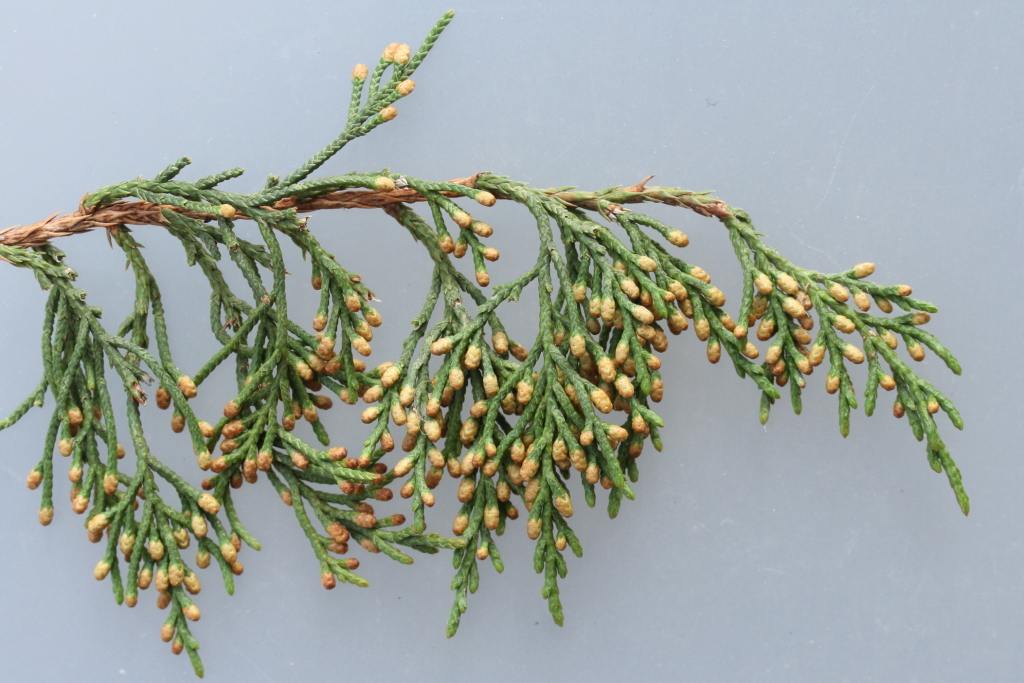Hesperocyparis macrocarpa
(Hartw. ex Gordon) BartelWidely spreading tree to 20 m high. Bark brown, becoming whitish with age, shallowly ridged. Branches horizontally spreading; branchlets quadrangular or terete, in 2-dimensional sprays. Leaves usually c. 2 mm, up to 8 mm long on lower stems, dark green, lacking gland on abaxial surface; apex obtuse or acute. Male cones oblong or elliptic, to 5 mm long. Female cones ovoid to cylindrical, 20–50 mm long; scales 8–14, each with 6–20 seeds. Seeds warty.
Wim, GleP, Brid, VVP, VRiv, MuF, GipP, OtP, WaP, Gold, CVU, GGr, DunT, WPro, HSF, HNF, OtR, Strz. Native to California, USA. Cupressus macrocarpa is a massive, widely spreading, flat-crowned tree, branching low down. Widely grown as windbreaks, hedges and street trees, and known to self-seed in some areas.
 Spinning
Spinning
